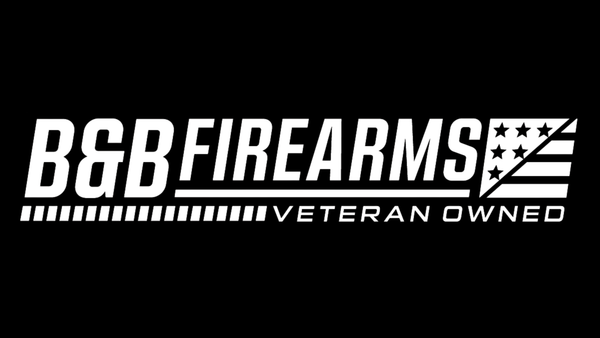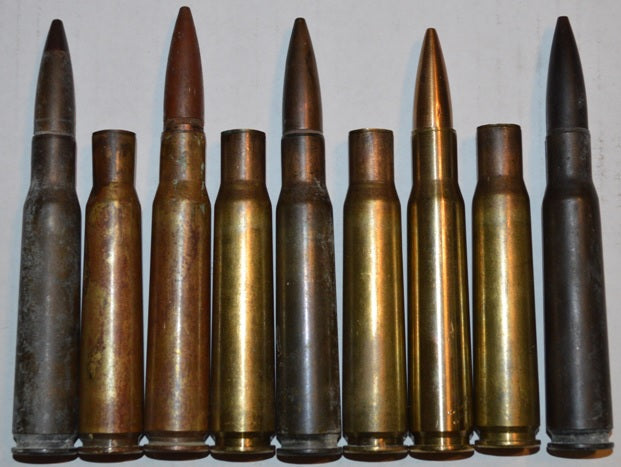Hardly ever referred to by its “official” nomenclature, 12.7x99mm NATO, the .50 Browning Machine Gun cartridge, or BMG, is an old cartridge with an illustrious history, and one that is still relevant today, despite its age.
Many extreme long-range rifles, like the ArmaLite AR50 A1, are chambered in it, and remain popular. Here’s a snapshot of what to know about this rifle and its cartridge pairing.
Origins of the .50 BMG
The .50 BMG cartridge was developed in the early 1900s for the M2 Browning Heavy Machine Gun and entered service in 1921; it was later adopted by NATO.
The origins of the cartridge revolve around the United States’ need for a more powerful cartridge to be used for anti-aircraft fire. Something larger was needed than the .30-06 Springfield cartridge used by the M1917 Browning Machine Gun and Springfield M1903 rifles, both of which were in service during the First World War.
The U.S. Army Ordnance wanted a cartridge that could deliver muzzle velocities in excess of 2700 FPS with a heavy projectile that could be used against tanks and aircraft. In essence, the .50 BMG is a much larger version of the .30-06 Springfield, but with a considerably larger case diameter and a longer taper that facilitates feeding and extraction.
It was desired that such a cartridge be able to penetrate .9” of hardened steel armor at 220 yards, and .75” of steel plate at 547 yards, and this new cartridge fit the bill.
Ballistic Notes

The massive .50 BMG cartridge is loaded with bullets that typically range between 650 and 800 grains, with muzzle velocities around 2890 to just a bit more than 3000 FPS. It’s impressive to think that this cartridge fires bullets with comparable velocity to those of rifles chambered in 5.56, despite the fact that the former’s bullets weigh (usually) more than 10 times as much.
To put things in perspective, consider the muzzle energy delivered by the .30-06 Springfield, which can produce muzzle energies between 2000 and 3000 ft-lbs; the .50 BMG can produce muzzle energy as high as 15,000 ft-lbs, more than 5 times higher than the “aught-six” on the high end, and well more than 10 times higher than the 5.56.
It is a remarkably powerful round, and considering the muzzle energy it can deliver, it has been widely used as an anti-materiel round throughout its history. Multiple branches of the United States Armed Services utilize platforms chambered around this cartridge for a variety of purposes.
One of the niche uses of the .50 BMG cartridge is to disable the engines of vehicles such as cars and boats. It has more than enough power to the engine block of most commercial vehicles, incapacitating the engines. As a result, it can disable most unarmored and light-armored vehicles when used appropriately.
Because of its high muzzle velocity and exceptional effective range (almost 2000 yards), this cartridge has also seen considerable use as a sniper cartridge. It was used in the Korean War and Vietnam War in such a capacity and in the latter one of the longest confirmed kills was recorded at a distance of 2290 yards by a U.S. Marine sniper.
The .50 BMG is also widely used for long-range shooting by American civilians, where it is a very popular caliber due to its high-ballistic coefficient that, partially as a product of the bullet’s mass, produces very little wind drift.
One might not expect a cartridge of this caliber (pun intended) to exhibit such little drop and drift, but if (as an example) you take a .50 BMG cartridge loaded with a 633 grain bullet that leaves the muzzle at 2800 FPS, at 500 yards, it will drop about 43” and will drift just shy of 6” assuming you have a 10 MPH crosswind.
Which is not the best as far as drop and drift are concerned, but it’s pretty darn good considering the unbelievable power the bullet can deliver downrange. The crazy thing is, assuming the same load data, that same bullet would maintain almost 6600 ft-lbs of energy at that range - devastating.
All in all, the power, high ballistic coefficient, and effective range of the .50 BMG make it a very popular cartridge for extreme long-range rifles. Like other cartridges commonly used at such ranges, such as .338 Lapua and .375 and .408 CT, it performs very well, and it delivers way more energy downrange than other flat-shooters like .223 Remington and .220 Swift, which are also used for long-range shooting.
About the ArmaLite AR50

Interested in a .50 BMG rifle for extreme long-range shooting? Consider an ArmaLite AR50A1. Here’s why - what you get is a pairing with an exceptional cartridge that is (relatively) flat shooting and which delivers peerless downrange performance.
There are three other things to keep in mind. Recoil, the price of the cartridges, and the price of the gun.
First, the gun weighs nearly 40 lbs and comes pre-equipped with a muzzle brake. Recoil will not be as bad as you think.
Second, all long-range cartridges are expensive. The good thing about .50 BMG is that it is more tolerant of reloading than some other long-range cartridges like .408 CT, which exhibits accelerated cartridge neck erosion even after one firing.
Third, yes, the ArmaLite AR50 is expensive. But here at B&B Firearms, we offer an interest-free payment plan with 20% down. If that’s not a deal, we don’t know what is. Contact us for details.

